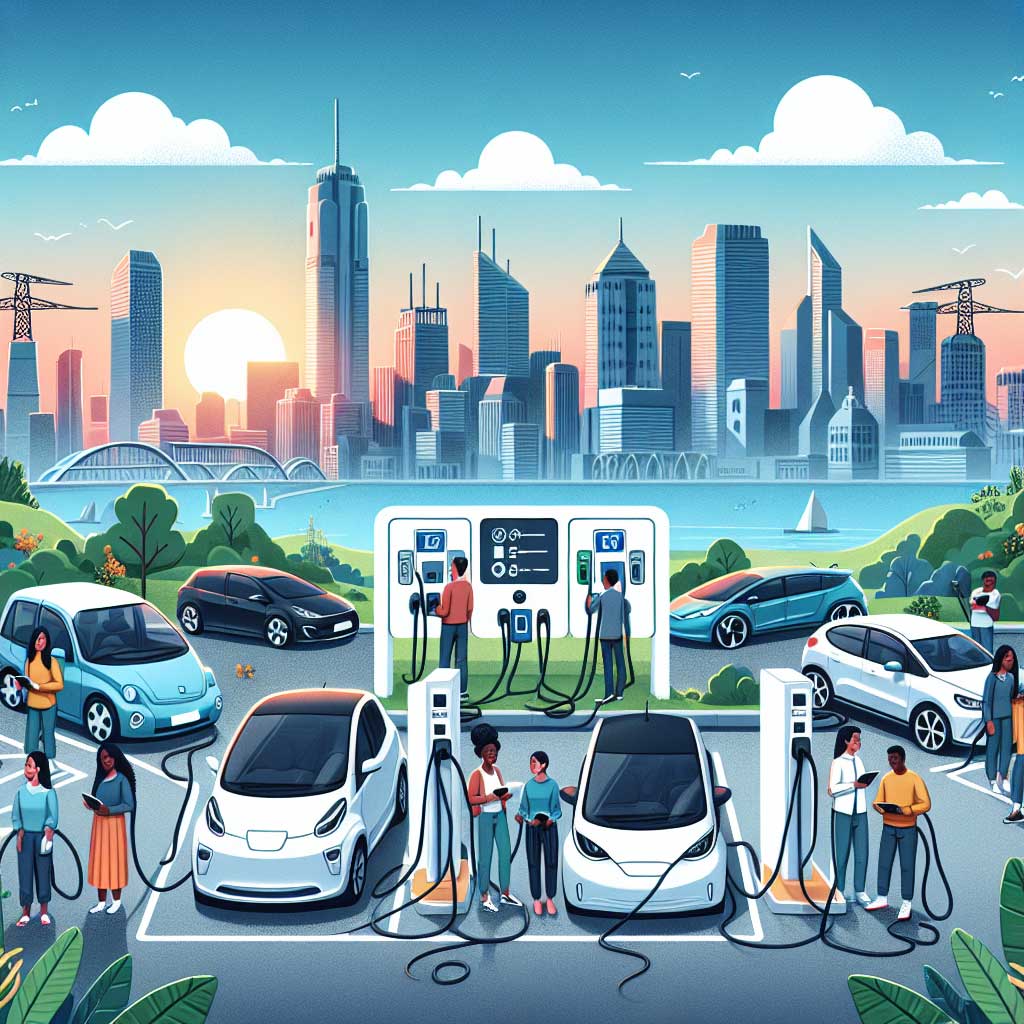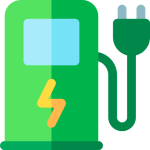
The 880-kilometre Hume Highway stretch between Sydney and Melbourne, Australia’s busiest inter-city corridor, is no longer the sole domain of petrol and diesel cars.1 With a rapidly expanding network of DC fast chargers, the electric vehicle (EV) road trip is not just possible—it’s practical, fast, and often more restful than its fossil-fuel counterpart.2
This detailed, tested guide is designed to take the guesswork out of the journey. We’ll explore the key charging stops, review the dominant charging networks, and uncover the most efficient strategies using a dedicated EV route planner.
🗺️ Planning Your EV Journey: The ABRP Strategy
Before you hit the Hume Highway, your best ally is A Better Route Planner (ABRP).3 This app is essential for EV road trips because, unlike standard GPS, it factors in crucial variables that affect an EV’s range and charging speed.
Key ABRP Settings for the Hume:
- Select Your Vehicle Model: This is critical.4 ABRP uses your specific EV’s battery capacity, charging curve (how fast it charges at different battery percentages), and efficiency to model your trip accurately.5
- Reference Consumption: For the Hume Highway, which is mostly 110 km/h freeway driving, you should set a less optimistic reference consumption than your city driving average. If your car typically gets 18 kWh/100km around town, set it to 20-22 kWh/100km for the highway. Wind, elevation, and high speeds are major power drains.
- Arrive SoC (State of Charge): Set this to a realistic, low buffer, such as 10%, for arrival at your destination and each charging stop. This reduces unnecessary “top-ups.”
- Charging Targets: The fastest way to travel is to charge frequently in short bursts (known as the ‘Charge Hard, Drive Hard’ strategy).6 Set ABRP to recommend charging stops that get you enough charge to reach the next station with your safety buffer, rather than charging to 100% at every stop. Optimal DC charging speeds typically occur between 20% and 80% SoC. Charging past 80% adds significant time with minimal range gain.
🛑 The Essential Charging Stops: North to South
The Hume Highway corridor is well-covered by major charging networks, primarily Chargefox and Evie Networks, with Tesla Superchargers increasingly opening up to all CCS-enabled EVs. While many variations exist, the following stops offer high-powered (150kW+) ultra-rapid chargers, making them the most time-efficient choices.
| Stop Location | Network | Charging Power | Why Stop Here? | Expected Charging Time |
| Goulburn | Chargefox / Evie / NRMA | 50kW – 350kW | Excellent first stop to top up after Sydney. Multiple nearby options (Chargefox at the Big Merino, Evie/NRMA nearby) provide redundancy. | 20 – 30 mins (20% to 80%) |
| Yass | Tesla Supercharger (Open to All CCS) | Up to 250kW | A newer, high-capacity site. Good for a quick boost or a solid lunch break. | 15 – 25 mins |
| Gundagai / Tarcutta | Chargefox / Tesla / Evie | 50kW – 350kW | Crucial midpoint stop. Check PlugShare for the most reliable site on the day—Gundagai can sometimes have reliability issues. Tarcutta is a strong, dedicated alternative. | 20 – 30 mins |
| Albury/Wodonga | Chargefox / AmpCharge | 50kW – 350kW | Last major stop before the Victorian stretch. Albury has robust options. Perfect for a slightly longer charge and an evening meal if splitting the drive over two days. | 25 – 35 mins |
| Euroa | Chargefox | 350kW | Victorian ultra-rapid site. The final key stop to ensure you have enough range to reach Melbourne CBD or a slower AC destination charger. | 15 – 25 mins |
Note: All charging times are estimates for modern EVs with a large battery and high charging speed (e.g., Kia EV6, Hyundai IONIQ 5, Tesla Model 3/Y), assuming charging from $\sim$20% to $\sim$80% state of charge.
🔋 Expected Charging Times and The ‘Charging Curve’
The major difference between an EV and an Internal Combustion Engine (ICE) car is the Charging Curve. A typical EV will charge fastest when its battery is low (e.g., from 10% to 50%) and will slow down significantly as it approaches full (80% to 100%).7
For the Sydney-Melbourne run, the goal is to leverage these fast-charging periods:
- Aim for a 20-80% window: This is the ‘sweet spot’ where you get the most range per minute of charging. Most ultra-rapid stops (350kW) should only take 20-30 minutes to add about 200-300 km of range.
- The 9-Hour EV Challenge: Experienced EV drivers can complete the Sydney-Melbourne drive in approximately 9.5 to 10 hours total, including 3-4 charging stops. This is only about an hour longer than a fast ICE trip and allows for necessary rest and meals.
- Splitting the Trip: A relaxed two-day journey is highly recommended. Stopping overnight around Albury/Wodonga or Wagga Wagga allows you to fully charge at your accommodation (Level 2 AC charging) for a fresh 100% start, minimising reliance on public DC chargers the next morning.
🇦🇺 Australian Charging Networks: A Review
For a successful Sydney-Melbourne trip, you will need to rely on the major networks. Having their respective apps downloaded and accounts set up before you leave is non-negotiable.
Chargefox (The Backbone)
- Key Feature: Australia’s largest network, operated by motoring clubs (NRMA, RACV, etc.). Its ultra-rapid chargers are the most common on the Hume.8
- Practical Tip: Use the Chargefox app for real-time availability and check-in/check-out.9 It’s the network you will likely use the most.
Evie Networks (The Upstart)
- Key Feature: Widely expanding network often found at major shopping centres or popular food outlets (e.g., McDonald’s, KFC).
- Practical Tip: Evie often uses ‘Autocharge,’ allowing you to simply plug in and start charging if your EV is registered—a huge convenience time-saver.10
Tesla Superchargers (The Newcomer)
- Key Feature: Extremely reliable and high-capacity (up to 250kW). Many sites are now open to all CCS-equipped EVs.
- Practical Tip: Non-Tesla drivers must download the Tesla app to initiate charging. They are an excellent, high-speed backup, particularly at new, multi-stall locations like Yass.
✅ Road Trip Survival Checklist
- Downloaded Apps: ABRP, PlugShare, Chargefox, Evie Networks, and Tesla.
- RFID Cards: Order and carry RFID access cards for Chargefox and Evie as a backup for when phone reception is patchy.
- Check-In/Check-Out: Be courteous and check in on PlugShare when you arrive at a charger and check out when you leave. This updates the status for other drivers.
- Know Your Plan B: Always have a backup charging location within range of your planned stop, in case a charger is faulty or busy. ABRP is invaluable for this.
- Charger Etiquette: Do not charge past 80% at a DC fast charger if other cars are waiting. Move your car immediately after your session is complete.
The EV road trip from Sydney to Melbourne is a testament to the rapid evolution of Australia’s charging infrastructure. By combining smart route planning with an understanding of charging best practices, you can enjoy a smooth, reliable, and even more enjoyable journey on the Hume Highway.
FAQs
How long does it actually take to drive from Sydney to Melbourne in an EV?
Typical door-to-door times for experienced EV drivers are around 9.5-10.5 hours with 3-4 short DC charging stops. Factors include vehicle efficiency, average speed, traffic and length of charging stops.
Which charging network should I rely on?
Use multiple networks. Chargefox and Evie Networks are dominant on the Hume; Tesla Superchargers are also useful for CCS vehicles. Download apps for all major networks, carry RFID cards where recommended and plan backup sites.
Should I charge to 100% before I leave?
Not necessary. For long runs it’s more time-efficient to leave with ~80-95% and use short DC top-ups en route. If you plan to start early and avoid DC stops, a full charge overnight is fine.
How do I set ABRP for the most accurate plan?
Select your exact vehicle model, set a realistic highway reference consumption (add 10-20% to city figures), set arrival SoC to ~10%, enable live traffic and weather data, and prefer short, frequent charges to 70-80% rather than long 100% charges.
What about towing or carrying heavy loads?
Towing significantly reduces range. If towing, increase planned charging frequency and have extra backups. ABRP and some vehicle apps can model reduced efficiency for towing.
About EV Evolution
EV Evolution is the leading online platform dedicated to Australian electric vehicle owners and enthusiasts. We foster a vibrant community, delivering essential EV news and insights, and enhancing user engagement through our innovative, AI-powered chatbot for dynamic discussions. Our mission is to empower Australian electric vehicle owners and enthusiasts by fostering a vibrant, AI-driven online community that connects, informs, and advances the nation’s electric vehicle landscape.




